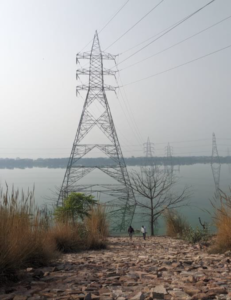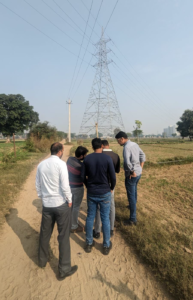Given the dynamically changing technological environment, drones and data analytics have redefined many industries, including the power transmission and distribution sector, notes Kanav Kumar.

With the introduction of innovative technologies, such as drones and cloud-based platforms, power utility services are ensuring more effective, trustworthy, and data-supported means of power infrastructure maintenance.
Power transmission and distribution networks cover large areas and are quite complex. The usual inspection and maintenance techniques have their flaws, such as time-consuming manual work, safety risks for field workers, and the lack of real-time data collection. This calls for a more up-to-date approach that can tackle these problems and improve the efficiency and reliability of the system.
Using drones for aerial insights has revolutionized the power industry by providing advanced capabilities for aerial inspection and data collection. With high-resolution cameras, LiDAR sensors, and thermal imaging technology, drones can gather detailed imagery and data from vantage points that were previously unreachable. This unique perspective allows utilities to spot vegetation encroachments, evaluate infrastructure conditions, and identify potential faults with exceptional precision and speed.
Drones are rewriting the playbook for power transmission maintenance with their ability to access inaccessible areas and capture intricate details. As of November 2020, transmission line lengths above 220kV surged to a staggering 433,510 ckm, showcasing a robust growth trajectory at a CAGR of 7.5 per cent from 2013-14 to 2019-20. This growth reflects the industry’s commitment to expanding capacity and meeting escalating energy demands.
The story doesn’t end there. With an interconnected grid spanning 474,998 ckm and transformation capacity of 1,196,883 MVA, as of August 2023, our nation stands tall among global leaders in grid synchronization. Interregional capacity has skyrocketed by an astounding 212 per cent since 2014, reaching 112,250 MW, underscoring the resilience and adaptability of our power infrastructure.
Case Study
In one of our recent projects, we were tasked with addressing a critical issue plaguing a 220kV transmission line connecting the national grid to an industrial area substation. A significant portion of the line, spanning approximately 3 to 4 km, was submerged in a water body, posing immense challenges for operational and maintenance services. The primary concern was frequent tripping problems, which not only disrupted power supply but also incurred substantial losses.
 Upon swift action, our team conducted a comprehensive inspection, meticulously identified 40 to 50 major points and components along the line. Through our thorough analysis, we pinpointed a critical flaw: a conductor in the gantry was inadvertently touching the insulator, triggering the tripping issues and subsequent operational inefficiencies. The problem has been persisted for a staggering 7 to 8 months, resulting in penalties imposed by the national grid. Recognizing the urgency of the situation, we swiftly rectified the issue within a mere week of its identification, alleviating the burden on both the grid and the industrial area substation.
Upon swift action, our team conducted a comprehensive inspection, meticulously identified 40 to 50 major points and components along the line. Through our thorough analysis, we pinpointed a critical flaw: a conductor in the gantry was inadvertently touching the insulator, triggering the tripping issues and subsequent operational inefficiencies. The problem has been persisted for a staggering 7 to 8 months, resulting in penalties imposed by the national grid. Recognizing the urgency of the situation, we swiftly rectified the issue within a mere week of its identification, alleviating the burden on both the grid and the industrial area substation.
This case underscores the indispensable role of advanced drone and data analytic services. By leveraging advance technology and sophisticated data analysis techniques, we can swiftly identify and address complex issues. In essence, our high-tech solutions empower utilities to proactively manage and maintain their networks, ensuring uninterrupted power supply and minimizing costly downtime.
 Drone technology has immense potential to gather large volumes of data. Yet, without proper analysis and understanding, this data is just a bunch of digital information. This is where data analytics steps in. By using sophisticated algorithms and machine learning methods, utilities can uncover valuable insights from the data collected by drones. This allows them to make informed choices and focus on maintenance tasks depending on risk and asset health.
Drone technology has immense potential to gather large volumes of data. Yet, without proper analysis and understanding, this data is just a bunch of digital information. This is where data analytics steps in. By using sophisticated algorithms and machine learning methods, utilities can uncover valuable insights from the data collected by drones. This allows them to make informed choices and focus on maintenance tasks depending on risk and asset health.
Cloud-based platforms serve as the backbone of modern data management and analysis. By centralizing data storage and processing in the cloud, utilities can streamline collaboration, enhance accessibility, and scale their operations seamlessly. These platforms provide a single source of truth for all stakeholders, enabling real-time data sharing, collaboration, and decision-making across departments and geographic locations.
The Integrated Approach/ From Data Collection to Action: Utilizing drones, data analytics, and cloud-based platforms creates an all-encompassing solution for managing power transmission and distribution. This process starts with deploying drones for aerial inspections and collecting data, which is then analysed in the cloud. The results from this analysis help in making decisions, allowing utilities to focus on maintenance tasks, improve asset performance, and boost system reliability.
Towards a Sustainable Future
Making strides towards a greener future the power industry is seeing an increase in the need for dependable and eco-friendly energy sources. One solution that has great promise is the use of drones and data analysis. By embracing new technologies and harnessing the potential of data, utility companies can enhance their efficiency, cut costs, and in turn, boost safety, reliability, and their commitment to the environment.
Overall, combining drones and data analytics is a game-changer in power transmission and distribution management. This fusion of advanced technologies opens up doors for utilities to innovate, operate more efficiently, and promote sustainability. It will have a lasting impact on the power industry for future generations.
About the author: Kanav Kumar is Business Head and Co-founder, BetterDrones, and may be contacted on kanav@betterdrones.in


